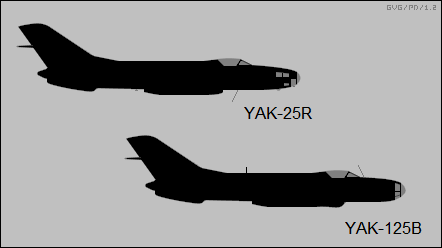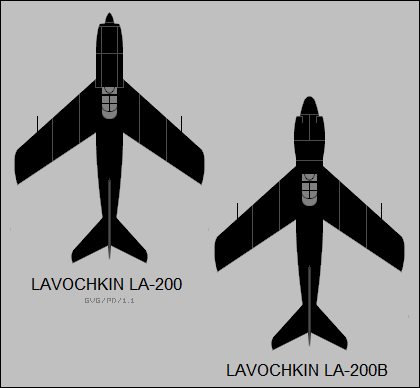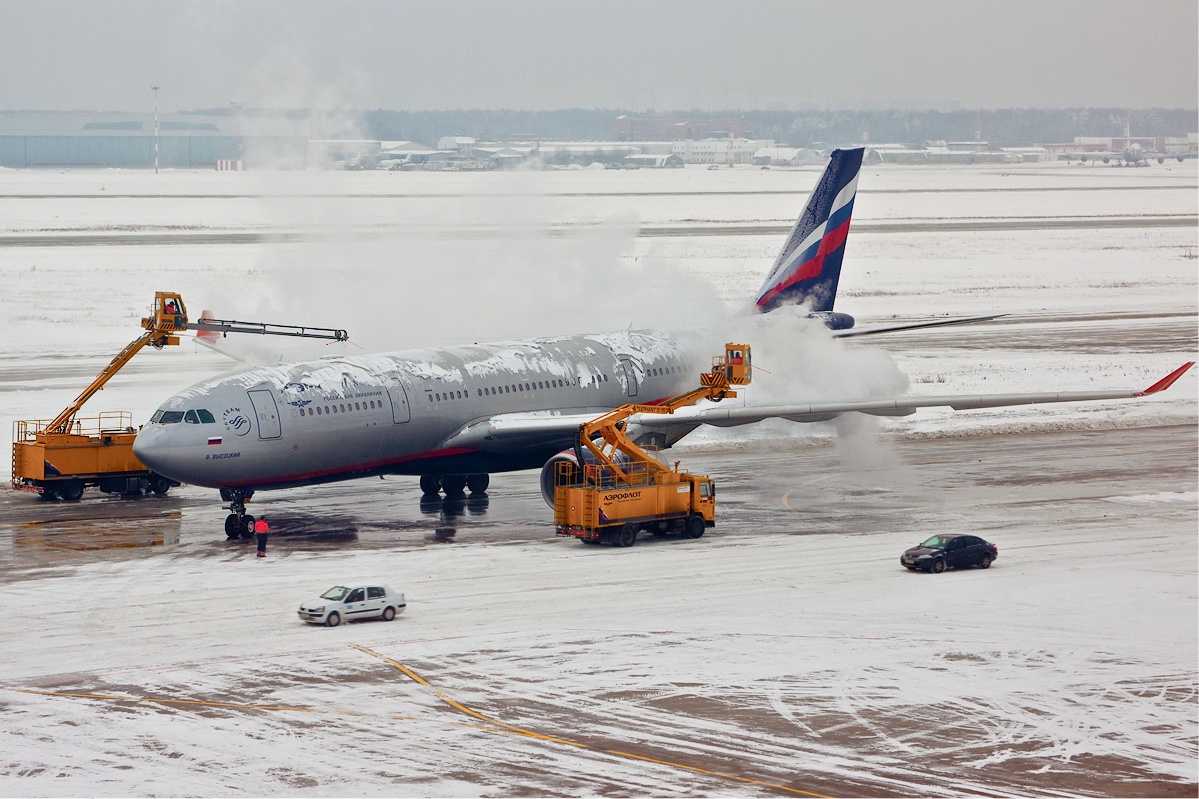|
Yakovlev Yak-25
The Yakovlev Yak-25 (List of NATO reporting names for fighters, NATO designation Flashlight-A/Mandrake) is a swept wing, turbojet-powered interceptor aircraft, interceptor and reconnaissance aircraft built by Yakovlev and used by the Soviet Union. Design and development The Yak-25 originated from a need for long-range Interceptor aircraft to protect the USSR's northern and eastern territory. The specification for a two-seat, twin-engine jet fighter and a related reconnaissance aircraft was issued by Joseph Stalin on 6 August 1951. Yak-120 Yakovlev began developing a two-seat, twin-engine patrol interceptor, designated the Yak-120 by the design bureau, in 1951. It received official authorization by a directive of the Council of Ministers of the Soviet Union, Council of Ministers on 10 August of that year. In a break from previous Yakovlev designs, the Yak-120's thin, mid-set wings were swept back at a 45 degree angle with large two-section flaps. To provide more directional s ... [...More Info...] [...Related Items...] OR: [Wikipedia] [Google] [Baidu] |
WikiProject Aircraft
A WikiProject, or Wikiproject, is an affinity group for contributors with shared goals within the Wikimedia movement. WikiProjects are prevalent within the largest wiki, Wikipedia, and exist to varying degrees within Wikimedia project, sibling projects such as Wiktionary, Wikiquote, Wikidata, and Wikisource. They also exist in different languages, and translation of articles is a form of their collaboration. During the COVID-19 pandemic, CBS News noted the role of Wikipedia's WikiProject Medicine in maintaining the accuracy of articles related to the disease. Another WikiProject that has drawn attention is WikiProject Women Scientists, which was profiled by ''Smithsonian Magazine, Smithsonian'' for its efforts to improve coverage of women scientists which the profile noted had "helped increase the number of female scientists on Wikipedia from around 1,600 to over 5,000". On Wikipedia Some Wikipedia WikiProjects are substantial enough to engage in cooperative activities with outsi ... [...More Info...] [...Related Items...] OR: [Wikipedia] [Google] [Baidu] |
Mikulin AM-5
The Tumansky RD-9 (initially designated Mikulin AM-5) was an early Soviet turbojet engine, not based on pre-existing German or British designs. The AM-5, developed by scaling down the AM-3, was available in 1952 and completed testing in 1953; it produced thrust without afterburner. The AM-5 engine is notable for making possible the first mass-produced supersonic interceptors such as the MiG-19, and the first Soviet all-weather area interceptor, the Yak-25. When Sergei Tumansky replaced Alexander Mikulin as the OKB-24's chief designer in 1956, the engine was renamed RD-9. The engine was later built under license in China as the WP-6. Variants and applications ;RD-9A: ;RD-9B: Used in the East German civilian jetliner project Baade 152 in 1958 and 1959, replaced when Pirna 014 engines became available. ;RD-9AK: Non-afterburning versions for the Yak-25 and Yak-26. ;RD-9AF-300: Afterburning version for the Yak-27 and Yak-28. ;RD-9AF2-300: Afterburning version for the Yak-27 and ... [...More Info...] [...Related Items...] OR: [Wikipedia] [Google] [Baidu] |
Saratov
Saratov ( , ; , ) is the largest types of inhabited localities in Russia, city and administrative center of Saratov Oblast, Russia, and a major port on the Volga River. Saratov had a population of 901,361, making it the List of cities and towns in Russia by population, 17th-largest city in Russia by population. Saratov is north of Volgograd, south of Samara, and southeast of Moscow. The city stands near the site of Ukek, Uvek, a city of the Golden Horde. Tsar Feodor I of Russia likely developed Saratov as a fortress to secure Russia's southeastern border. Saratov developed as a shipping port along the Volga and was historically important to the Volga Germans, who settled in large numbers in the city before they were expelled before and during World War II. Saratov is home to a number of cultural and educational institutions, including the Saratov Drama Theater, Saratov Conservatory, Radishchev Art Museum, Saratov State Technical University, and Saratov State Univ ... [...More Info...] [...Related Items...] OR: [Wikipedia] [Google] [Baidu] |
Scientific Research Institute of The Air Force
Science is a systematic discipline that builds and organises knowledge in the form of testable hypotheses and predictions about the universe. Modern science is typically divided into twoor threemajor branches: the natural sciences, which study the physical world, and the social sciences, which study individuals and societies. While referred to as the formal sciences, the study of logic, mathematics, and theoretical computer science are typically regarded as separate because they rely on deductive reasoning instead of the scientific method as their main methodology. Meanwhile, applied sciences are disciplines that use scientific knowledge for practical purposes, such as engineering and medicine. The history of science spans the majority of the historical record, with the earliest identifiable predecessors to modern science dating to the Bronze Age in Ancient Egypt, Egypt and Mesopotamia (). Their contributions to mathematics, astronomy, and medicine entered and shaped the Gree ... [...More Info...] [...Related Items...] OR: [Wikipedia] [Google] [Baidu] |
RP-1 Izumrood
RP-1 (Rocket Propellant-1 or Refined Petroleum-1) and similar fuels like RG-1 and T-1 are highly refined kerosene formulations used as rocket fuel. Liquid-fueled rockets that use RP-1 as fuel are known as kerolox rockets. In their engines, RP-1 is Spray nozzle, atomized, mixed with liquid oxygen (LOX), and ignited to produce thrust. Developed in the 1950s, RP-1 is outwardly similar to other kerosene-based fuels like Jet A and JP-8 used in turbine engines but is manufactured to stricter standards. While RP-1 is widely used globally, the primary rocket kerosene formulations in Russia and other former Soviet countries are RG-1 and T-1, which have slightly higher densities. Compared to other rocket fuels, RP-1 provides several advantages with a few tradeoffs. Compared to liquid hydrogen, it offers a lower specific impulse, but can be stored at ambient temperatures, has a lower explosion risk, and although its specific energy is lower, its higher density results in greater energy de ... [...More Info...] [...Related Items...] OR: [Wikipedia] [Google] [Baidu] |
Lavochkin La-200
The Lavochkin La-200 (a.k.a. Aircraft 200) was a two-seater, swept winged, night/all-weather jet prototype designed as an interceptor and manufactured by the Soviet Union's Lavochkin Design Bureau from 1948. Design and development In response to a requirement for a high performance night and all-weather interceptor, Lavochkin (OKB-310), Sukhoi ( OKB-134) and Mikoyan-Gurevich (OKB-155) design bureau developed the La-200, Su-15, and I-320 (where the I stands for ''Istrebitel'', or "Fighter") respectively. A key component of the three competing aircraft, was the "Toriy" ("Thorium") centimetre waveband NII-17 radar at Tikhomirnov NIIP - (NIIP for ''Nauchno-Issledovatel'skiy Institut Priborostroyeniya'', or "Research Institute of Instrument Engineering"), which was capable of detecting a Boeing B-29 Superfortress bomber at a range of . The La-200 was an all-metal, two seater, twin-engined jet aircraft, with a tricycle undercarriage and mid set wings with 40° sweep at 1/4 chord ... [...More Info...] [...Related Items...] OR: [Wikipedia] [Google] [Baidu] |
De-icing
De-icing is the process of removing snow, ice or frost from a surface. Anti-icing is the application of chemicals that not only de-ice but also remain on a surface and continue to delay the reformation of ice for a certain period of time, or prevent adhesion of ice to make mechanical removal easier. De-icing can be accomplished by mechanical methods (scraping, pushing); through the application of heat; by use of dry or liquid chemicals designed to lower the freezing point of water (various salts or brines, alcohols, glycols); or by a combination of these different techniques. Application areas Roadways In 2013, an estimated 14 million tons of salt were used for de-icing roads in North America. De-icing of roads has traditionally been done with salt, spread by snowplows or dump trucks designed to spread it, often mixed with sand and gravel, on slick roads. Sodium chloride (rock salt) is normally used, as it is inexpensive and readily available in large quantities. Howe ... [...More Info...] [...Related Items...] OR: [Wikipedia] [Google] [Baidu] |
Autopilot
An autopilot is a system used to control the path of a vehicle without requiring constant manual control by a human operator. Autopilots do not replace human operators. Instead, the autopilot assists the operator's control of the vehicle, allowing the operator to focus on broader aspects of operations (for example, monitoring the trajectory, weather and on-board systems). When present, an autopilot is often used in conjunction with an autothrottle, a system for controlling the power delivered by the engines. An autopilot system is sometimes Colloquialism, colloquially referred to as ''"George"'' (e.g. ''"we'll let George fly for a while"; "George is flying the plane now".''). The etymology of the nickname is unclear: some claim it is a reference to American inventor George De Beeson (1897–1965), who patented an autopilot in the 1930s, while others claim that Royal Air Force pilots coined the term during World War II to symbolize that their aircraft technically belonged to Ki ... [...More Info...] [...Related Items...] OR: [Wikipedia] [Google] [Baidu] |
Airband
Airband or aircraft band is the name for a group of frequencies in the VHF radio spectrum allocated to radio communication in civil aviation, sometimes also referred to as ''VHF'', or phonetically as ''"Victor"''. Different sections of the band are used for radionavigational aids and air traffic control. In most countries a license to operate airband equipment is required and the operator is tested on competency in procedures, language and the use of the phonetic alphabet. Spectrum usage The VHF airband uses the frequencies between 108 and 137 MHz. The lowest 10 MHz of the band, from 108 to 117.95 MHz, is split into 200 narrow-band channels of 50 kHz. These are reserved for navigational aids such as VOR beacons, and precision approach systems such as ILS localizers. , most countries divide the upper 19 MHz into 760 channels for amplitude modulation voice transmissions, on frequencies from 118 to 136.975 MHz, in steps of 25 kHz. In Euro ... [...More Info...] [...Related Items...] OR: [Wikipedia] [Google] [Baidu] |
IFF Transponder
Identification, friend or foe (IFF) is a combat identification system designed for command and control. It uses a transponder that listens for an ''interrogation'' signal and then sends a ''response'' that identifies the broadcaster. IFF systems usually use radar frequencies, but other electromagnetic frequencies, radio or infrared, may be used. It enables military and civilian air traffic control interrogation systems to identify aircraft, vehicles or forces as friendly, as opposed to neutral or hostile, and to determine their bearing and range from the interrogator. IFF is used by both military and civilian aircraft. IFF was first developed during World War II, with the arrival of radar, and several friendly fire incidents. IFF can only positively identify friendly aircraft or other forces. If an IFF interrogation receives no reply or an invalid reply, the object is not positively identified as foe; friendly forces may not properly reply to IFF for various reasons such as equip ... [...More Info...] [...Related Items...] OR: [Wikipedia] [Google] [Baidu] |









